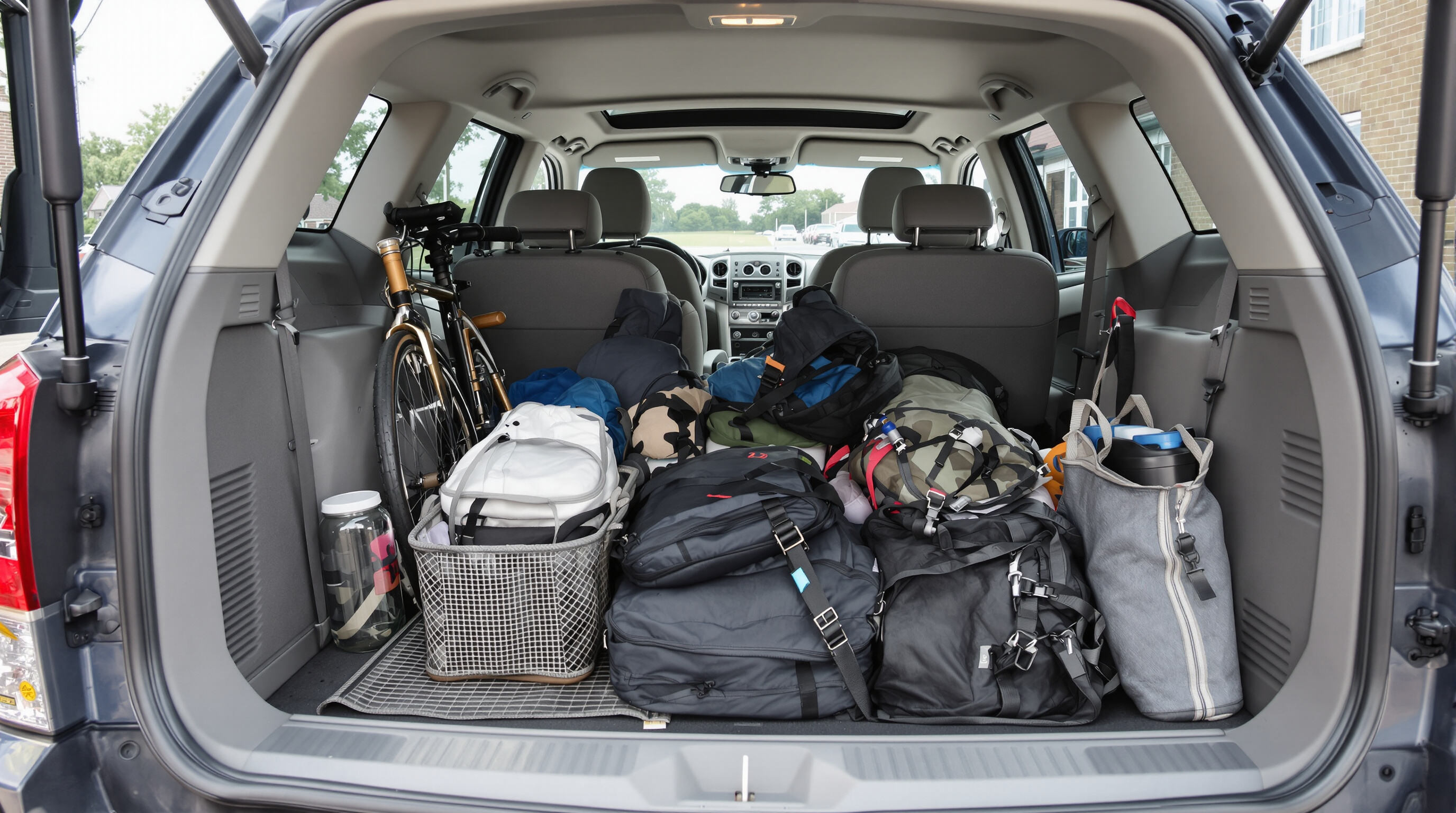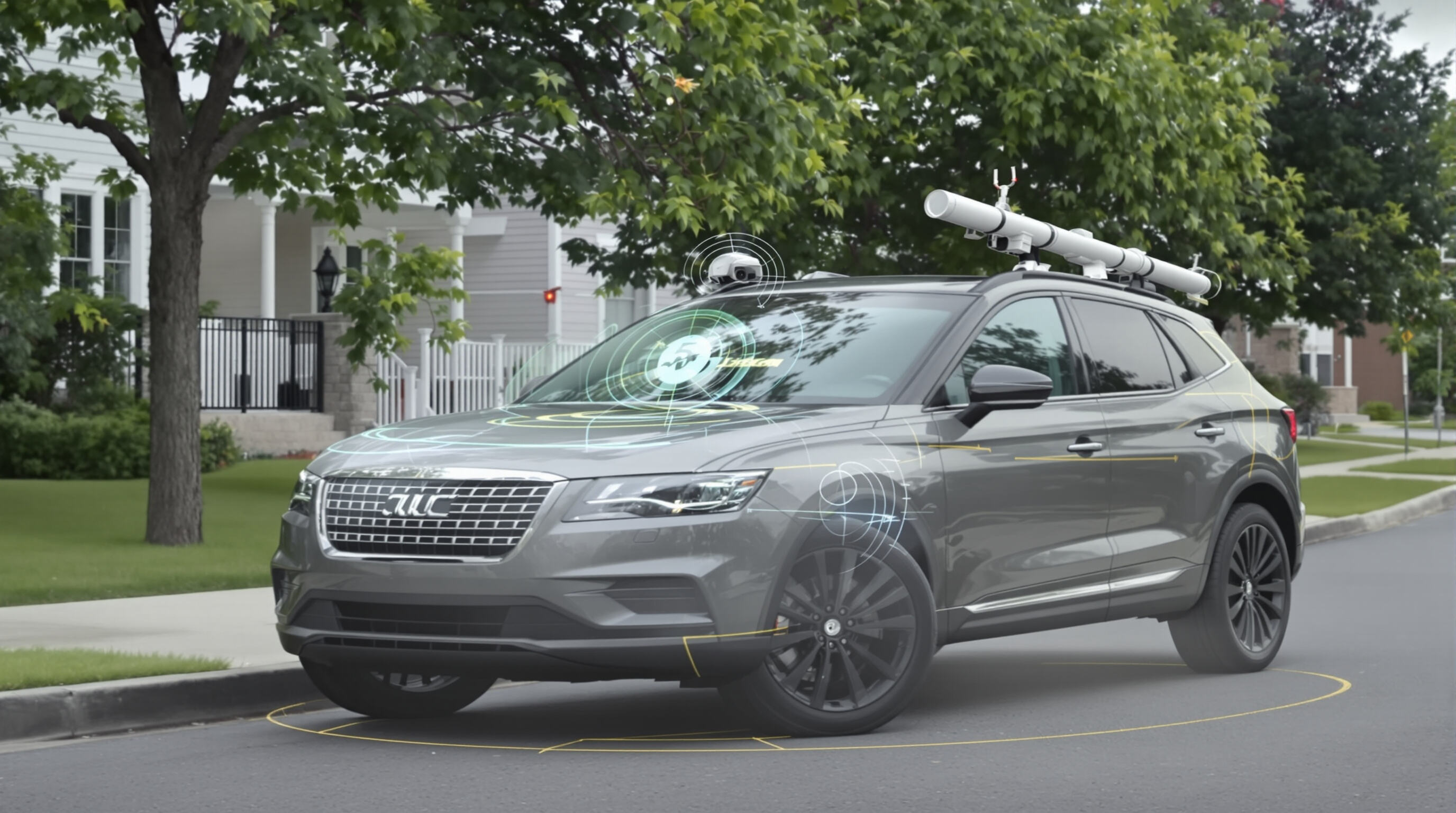Why Used SUVs Offer the Best Value for Family Road Trips
The Growing Trend of Families Choosing Used SUVs for Travel
According to the latest Family Vehicle Preference Report from J.D. Power, around 78 percent of households are going for used SUVs when planning road trips these days. People seem to realize that secondhand models actually offer pretty good value for money while still having plenty of room and those important safety tech features. The AAA did another survey last year too, and it turned out that about 92% of parents really like how SUVs let them pack all their stuff better than minivans or regular cars do. Sports equipment, kid carriers, suitcases everything fits somehow! These days, most family favorites such as the Honda Pilot and Toyota Highlander come with three rows of seats as standard. That means families shopping around can find decent condition used SUVs loaded with all sorts of fancy gadgets for roughly 40% less than what they would cost brand new.
Balancing Budget and Functionality With Pre-Owned Models
CPO SUVs really hit the sweet spot when it comes to saving money at purchase time but still getting something reliable down the road. Looking at depreciation stats from KBB's latest market report, we find that those 2 to 3 year old SUV models hold about 30 percent more value compared to similar sedans on the market. This means folks have extra cash left over for things they actually need during adventures, such as installing a roof rack or picking up some maintenance service plans. Take a look at real world numbers too. A certified used SUV priced around $35k with roughly 25 thousand miles on it usually comes in about twelve grand cheaper than buying brand new. And guess what? Most of these vehicles still come with coverage for around four fifths of the original factory warranty period.
Long-Term Value Retention of Family-Friendly SUVs With Ample Cargo Space
After five years on the road, midsize SUVs still hold about 55% of their original value, which beats smaller crossovers by nearly 18%, according to S&P Global Mobility data from 2025. Why do these vehicles keep their worth so well? Partly because they're built with tough stuff like reinforced frames around seating areas and fabrics that stand up better against rain, snow, and spilled drinks. Take a look at models with at least 75 cubic feet of cargo room, think Subaru Outback or Hyundai Santa Fe. These big boys lose value about 9% slower each year compared to smaller cars. That means when family members want to trade up for something newer, they actually get back more money from their old ride.
Spacious Interiors and Smart Storage Solutions in Used SUVs

Interior Comfort and Passenger Legroom in Top-Rated Used SUVs
Modern used SUVs emphasize passenger comfort, with reclining rear seats and climate-controlled cabins even in 2018-2022 models. Top-rated 3-row midsize SUVs provide up to 41.7 inches of second-row legroom (MotorTrend 2025) sufficient for teens or rear-facing car seats. Higher trims often include heated seats and panoramic sunroofs, enhancing comfort on extended drives.
Space and Capacity for Luggage and Camping Gear Without Compromise
Pre-owned SUVs offer 33% more cargo space than new sedans, with 2025 midsize SUVs providing up to 97.6 cubic feet when rear rows fold flat. This capacity accommodates:
- 4 large suitcases (28 each)
- Cooler and portable grill
- 2 bicycles or rooftop tent
A 2023 AAA study found 72% of families prioritize vertical cargo space for strollers and bulk purchases a key advantage of SUVs over minivans.
Third-Row Seating Options in Affordable Pre-Owned SUVs
Entry-level used 3-row SUVs now cost 18% less than 2021 models due to increased dealership inventory. While third rows are best suited for children under 12, models like the 2019 Honda Pilot feature fold-flat seats, allowing flexible use between 8 passengers or 7.5 feet of interior length for oversized items.
Roof Cargo Boxes and Carriers for Expanding Storage Efficiently
Aftermarket roof racks add 18-22 cubic feet of storage enough for 6-8 additional travel bags. Hard-shell carriers maintain fuel efficiency better than rooftop bags, with aerodynamic designs reducing MPG loss by 31% (Consumer Reports 2024). Used SUVs with factory-installed roof rails simplify installation and ensure secure mounting.
Essential Safety Features in Reliable Used SUVs

For families looking for safer cars on a budget, many 2018 to 2023 used SUVs come equipped with advanced driver assistance systems that were previously only found in luxury cars. According to the 2025 U.S. News Safety Report, around 78 percent of models priced below thirty five thousand dollars actually have automatic emergency braking and lane keeping assist built right in from the factory. The Insurance Institute for Highway Safety reported in their 2024 findings that these kinds of tech can cut down front end crash risks by about twenty seven percent. What's really nice is how affordable they've become for people who want extra protection without breaking the bank.
Crash test ratings and real-world performance of popular models
The National Highway Traffic Safety Administration (NHTSA) and Insurance Institute for Highway Safety (IIHS) consistently award top safety picks to midsize SUVs with reinforced occupant cages. Vehicles earning "Good" ratings across all IIHS crash tests are associated with 40% fewer occupant injuries in real-world incidents compared to average-scoring models.
Family-focused technologies: rear cross-traffic alert and blind-spot monitoring
Rear cross-traffic alert helps prevent 1 in 5 parking lot collisions by detecting approaching vehicles up to 50 feet away, while blind-spot monitoring covers 98% of adjacent lane space. These features are now available in 63% of certified pre-owned SUVs from 2020 onward, making them a realistic upgrade for safety-minded families.
Fuel Efficiency and Driving Range for Long-Distance Family Travel
Fuel Efficiency and Driving Range for Long Trips in Midsize Used SUVs
Used midsize SUVs these days manage to combine decent power with pretty good gas mileage. The 2019 through 2023 models typically get around 24 to 28 miles per gallon on the highway based on those recent road trip efficiency reports from 2024. That means drivers can expect to drive well over 400 miles before needing to refuel, which covers about five hours of nonstop highway travel without stopping for gas. Take the 2021 version as an example it has a generous 19 gallon tank that gives roughly 100 extra miles compared to similar sized sedans. And best of all, families still have room for everyone since these vehicles maintain their three row seating configuration despite the improved fuel economy.
Hybrid and Turbocharged Options That Save on Fuel Without Sacrificing Power
Modern turbocharged four cylinder engines are starting to put out torque numbers that used to be exclusive to V6s, often hitting around 280 lb-ft or more. Hybrid versions of these cars can boost city mileage by roughly 35 to 40 percent compared to their non-hybrid counterparts. Take the Ford Explorer Hybrid as an example it packs a 318 horsepower engine yet still manages 28 mpg overall according to EPA tests from last year. That means owners save about $580 each year on gas when compared to traditional gas powered models. What makes these hybrids work so well is their ability to switch back and forth between electric motor and gasoline engine while driving on highways. This switching happens automatically in the background, so drivers don't notice much difference but still get better fuel economy without sacrificing how far they can go or ride quality.
Real-World MPG Data From Family Road Trip Case Studies
Independent testing shows most 3-row SUVs achieve 92-97% of their EPA estimates during summer trips at 65 MPH. A 2023 study tracking 200 families revealed:
| Vehicle Type | EPA MPG | Actual MPG | Range Variance |
|---|---|---|---|
| V6 AWD SUV | 22 | 20.8 | -5.5% |
| Hybrid SUV | 28 | 26.9 | -3.9% |
| Turbo 4cyl | 26 | 24.5 | -5.8% |
Roof cargo carriers reduced efficiency by 12-18% across all types a key factor for gear-heavy trips. Proper tire inflation (35+ PSI) and cruise control use helped families maximize range on 500-mile test routes.
Top Used SUV Models for Family Adventures and Road Trips
2019 Honda Pilot: Spacious Interior and Proven Reliability
The 2019 Honda Pilot leads the 3-row SUV segment with best-in-class passenger volume (157.7 cubic feet, CARFAX 2023) and a track record of reliability. Its 280-horsepower V6 handles mountain roads with ease, while available torque-vectoring AWD enhances stability on wet highways ideal for cross-state trips with kids and pets.
2020 Toyota Highlander: Safety Features and Fuel Efficiency Combined
For 2020, Toyota gave the Highlander a complete redesign, now comes with Toyota Safety Sense 2.0 right from the factory. This package includes helpful stuff like automatic emergency brakes and lane keeping assistance. The hybrid version gets pretty impressive fuel economy too, hitting around 35 miles per gallon on highways, which beats out regular models by about 23 percent according to EPA numbers from 2023. Parents will appreciate how easy it is to install car seats thanks to those sliding second row seats. And when kids get bored during road trips, there's an optional 12 speaker JBL® sound system that turns any drive into concert quality entertainment.
2018 Subaru Outback: Ideal for Outdoor-Focused Families
With 8.7 inches of ground clearance and standard symmetrical AWD, the Outback handles forest service roads better than most SUVs. Named a 2020 IIHS Top Safety Pick+, it features roof rails rated for 150 lbs dynamic load perfect for kayaks or rooftop tents while achieving 32 MPG on the highway (EPA 2023).
2021 Mazda CX-9: Luxury Touches Within a Used Vehicle Budget
The Mazda CX-9 delivers near-luxury refinement with available Nappa leather and real wood trim, yet used models cost 38% less than new (Kelley Blue Book 2024). Its turbocharged 2.5L engine produces 310 lb-ft of torque for confident highway merging, and standard Apple CarPlay® and Android Auto® ensure seamless connectivity across state lines.
FAQ Section
Why are used SUVs popular for family road trips?
Used SUVs are popular for family road trips because they offer ample space, advanced safety features, and better storage solutions at a more affordable price compared to new models.
How do used SUVs retain value over time?
Used SUVs retain value over time due to their durable construction, ample cargo space, and high demand among families, ensuring better resale value.
Are used SUVs fuel-efficient for long-distance travel?
Yes, modern used SUVs, especially those from 2019 to 2023, offer decent fuel efficiency, with some hybrid models providing even better mileage, making them suitable for long-distance travel.

